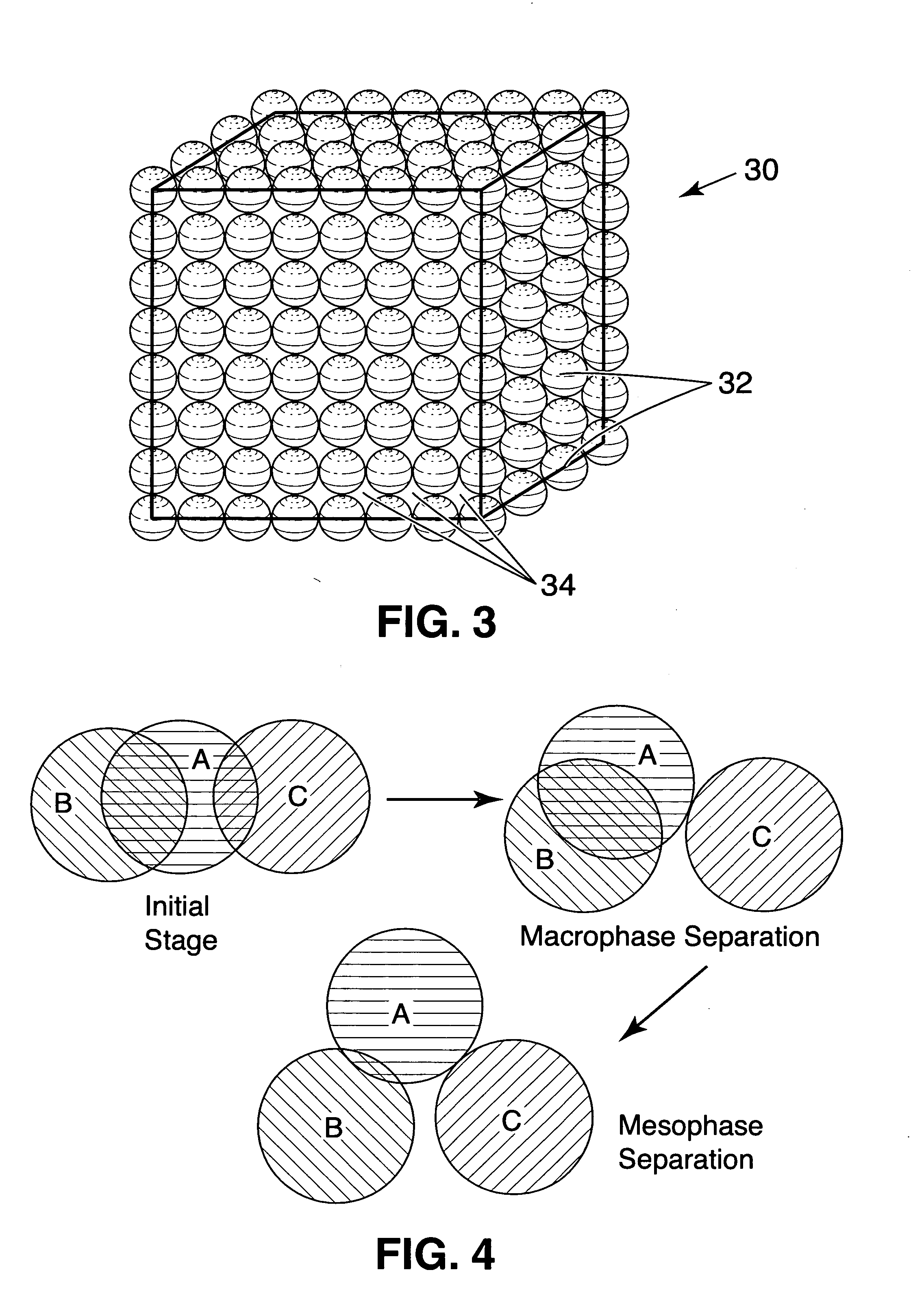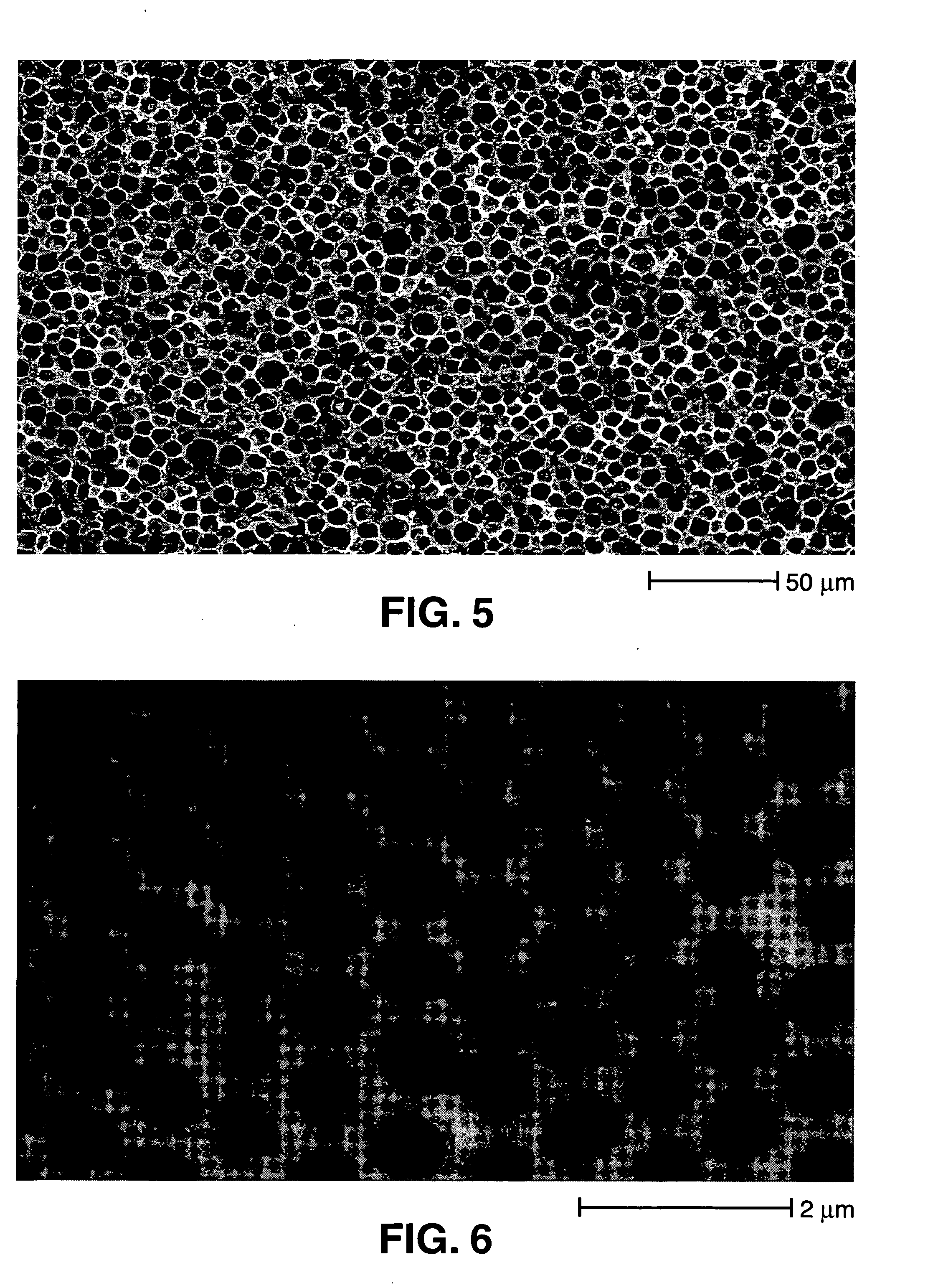Robust carbon monolith having hierarchical porosity
a carbon monolith and hierarchical porosity technology, applied in ceramics, other domestic objects, chemical processes, etc., can solve the problems of poor electrical conductivity of conventional beds packed with porous graphite particles, lack of robust stationary phases for high-performance liquid chromatography, etc., and achieve the effect of superior hydrodynamic properties of a monolithic structur
- Summary
- Abstract
- Description
- Claims
- Application Information
AI Technical Summary
Benefits of technology
Problems solved by technology
Method used
Image
Examples
example i
[0056] 6 g of silica beads were dispersed in 5 g of an aqueous solution of ethanol (80% ethanol, 20% water) using an ultrasonic mixer. 1.08 g FeCl3 was then dissolved into the suspension, followed with 2.2 g of resorcinol, dissolved by hand shaking. The colloid solution turned dark immediately after the addition of resorcinol, indicating the formation of a resorcinol / Fe(III) complex. 2.4 g of an ice-cooled, 37% formaldehyde solution in water was introduced into this mixture, in one step, with hand shaking. The mixture was kept in an ice-water bath for 10 minutes with magnetic stirring. After removal of the ice-water bath, the mixture was slowly transferred into 5 mm ID glass tubes which were capped when filled. These tubes were then placed in a 70° C. water bath. The mixture polymerized rapidly into a solid rod inside the glass tube. This rod detached from the tube wall because of the shrinking caused by polymerization. The polymer rod was aged time period of 5 h in the glass tube, ...
example ii
[0062] Generally following the method of Example I, 2 g of silica beads having a particle size of 5 μm and 1 g of silica beads having a particle size of 13 nm were used. Following introduction of the formaldehyde solution, the colloid was centrifuged at about 3000 RPM for 30 min. Only the large particles form a compacted ordered colloidal array while the small particles remain as a stable suspension between them. After removal of the supernant, poly-condensation of the colloidal array into a rod was carried out in the centrifuge tube in an oven at 50° C.
[0063] Method 4: Fe Catalyzed Polymer with a Duplex Template of Polystyrene Beads
[0064] This method is essentially the same as Method 3 above, the only difference being that polystyrene beads replace the silica beads.
[0065] For a better understanding of the above described colloidal templating methods, FIG. 3 illustrates the fabrication of the precursor monoliths made via methods 1 to 4. The colloidal array 30 can be silica and / or...
example iii
[0068] 10.4 g of TEOS, 8.7 g P123 and 3.5 g 1 m HCl were mixed in 69 g ethanol. The mixture reacted at 70° C. for 1.5 h. 3.3 g resorcinol in 3.6 g 37% formaldehyde was added into the mixture after the removal of ethanol by vacuum. The final mixture was introduced into a glass tube and reacted at 80° C. for 4 h. Afterwards the rod was thoroughly dried in a vacuum oven at 100° C.
[0069] Method 6: Reaction Induced Dual Phase Separation of Ternary Organic Mixture
[0070] A homogeneous solution of component A, component B, and component C is induced to perform dual phase separation via reaction. The polymerization of component A induces a primary phase separation of polymerized component A and component C in micron or submicron scale. As component A polymerizes, component B becomes enriched in the polymerized phase of component A. With further polymerization of component A, component B separates from component A, resulting in a secondary, nanometer scale phase separation. The removal of c...
PUM
| Property | Measurement | Unit |
|---|---|---|
| size | aaaaa | aaaaa |
| size | aaaaa | aaaaa |
| size | aaaaa | aaaaa |
Abstract
Description
Claims
Application Information
 Login to View More
Login to View More - R&D
- Intellectual Property
- Life Sciences
- Materials
- Tech Scout
- Unparalleled Data Quality
- Higher Quality Content
- 60% Fewer Hallucinations
Browse by: Latest US Patents, China's latest patents, Technical Efficacy Thesaurus, Application Domain, Technology Topic, Popular Technical Reports.
© 2025 PatSnap. All rights reserved.Legal|Privacy policy|Modern Slavery Act Transparency Statement|Sitemap|About US| Contact US: help@patsnap.com



